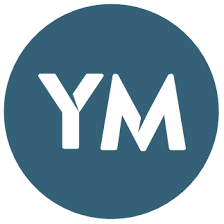Free
It's free to download
Technical
Settings:
Printed on an Ultimaker 2 Extended at .1mm resolution and 20% infill.
Parts I purchased:
1) "SPST Micromini Toggle Switch" (Radio Shack #275-0624).
2) "4 "AAA" Battery Holder" (Radio Shack #270-00413).
3) 6vdc 60 RPM gear motor (Amazon "DC 6V 60 RPM High Torque Electric Replacement Gear Box Motor").
4) 8 #18 (1 3/16" O.D. x 15/16" I.D. by 1/8") o-rings (Amazon, box and/or hardware store, ).
5) 4 "AAA" batteries.
Tools and supplies I used:
1) Rubber mallet.
2) Small vise.
3) Flat punch set.
4) Modeling knife.
5) Small files.
6) Sandpaper.
7) Slip joint pliers.
8) Needle nose pliers.
9) Thick cyanoacrylate glue.
10) Cyanoacrylate accelerator.
Notes:
Make absolutely sure your build plate is level and not too close to the print head as any "oozing" will negatively effect the operation of "The Pink and Green Domino Machine".
This is a tight tolerance build, so be prepared for post printing trimming, filing, sanding, etc.
If your printer has problems printing "Gear Drive Bevel.stl", either use supports or rotate it 180 degrees vertical.
Assembly:
Print all pieces as shown in "Assembly.stl".
Prior to assembly, test fit and trim, file, sand, etc. all parts as necessary for smooth movement of moving surfaces, and tight fit for non moving surfaces. Depending on the colors you chose and your printer settings, more or less trimming, filing and/or sanding will be required. If the tight fitting components are too loose, add a small dot of cyanoacrylate to each side of the pin, allow to dry completely (I use accelerator to speed the process), then try the fit again. Repeat until tight.
Assemble as per "Assembly.stl". I perform the assembly task in the following order:
1) Install motor.
2) Install "Gear Motor.stl" onto the motor shaft. You will have to slide the motor out slightly to perform this step.
4) Install "Arm Slide.stl".
5) Install "Gear Slide Small.stl". Adjust the motor position fore and aft to make sure "Gear Slide Small.stl" and "Gear Motor.stl" align.
6) Install "Slide .stl" as shown. Again, at this stage you should have tested the slide and made sure it operates smoothly with no drag. I had to file the top of both slide guides in "Chassis.stl" to remove any stray filament.
6) Install "Pin Slide.stl" as shown.
7) Install "Gear Drive Axle Chassis.stl" onto "Axle Chassis.stl" in the position shown.
8) Install the assembled axle into the rear of "Chassis.stl" as shown.
9) Install 4 o-rings on two of "Wheel.stl", then press the two assemblies onto each end of the assembled axle that was previously installed into "Chassis.stl". Make sure the wheels and gear rotate smoothly.
10) Press "Gear Drive.stl" into "Gear Drive Bevel.stl".
11) Using "Axle Gear Drive.stl", assemble the "Gear Drive.stl" and "Gear Drive Bevel.stl" onto "Chassis.stl". Make sure the wheels and gears rotate smoothly.
12) While holding "Gear Slide Bevel.stl" in the position shown, slide "Gear Slide Large.stl" into position and into "Gear Slide Bevel.stl".
13) Install 4 o-rings onto the remaining two "Wheel.stl".
14) Install "Axle Chassis.stl" into the front of "Chassis.stl" as shown, then press the "Wheel.stl" assemblies onto each end of "Axle Chassis.stl". Make sure the wheels rotate smoothly.
15) Install batteries in the battery holder, then touch the wires to the motor terminal to make sure the assembly moves forward, if not, reverse the wires and test again. Once the proper orientation is determined, solder the battery pack black wire to the correct motor terminal, the battery back red wire to the one of the switch terminals, then a red wire between the remaining switch terminal and motor terminal. Once complete, set the battery holder into the battery holder tray on "Chassis.stl".
16) Press "Canopy.stl" into "Rack.stl" as shown.
17) Press the "Canopy.stl" and "Rack.stl" assembly onto "Chassis.stl" as shown.
18) Print as many "Domino.stl" as you desire, testing each printed domino buy placing in "Rack.stl" and making sure it slides smoothly from one end to the other. If not, trim, file and/or sand "Rack.stl", "Domino.stl" or both. Carefully inspect each domino to make sure there is no "oozing" remnants on the build plate side of the domino (this will be a small bead of filament that squeezes out on the first layer if the print head is too close to the build plate). If detected, carefully remove it with a modeling knife, file and/or sandpaper as this is the most common cause of dominoes falling over or jamming in "Rack.stl".
Lubricate all moving surfaces with light machine oil.
Best of luck, and if you have any questions or comments, please feel free to comment and I will do my best to answer.
Hope you like it!
License
206 objects
727 Followers
Joined about 9 years ago
My basement in Oklahoma, US
I fail when I decide to stop learning.
 Free
Free